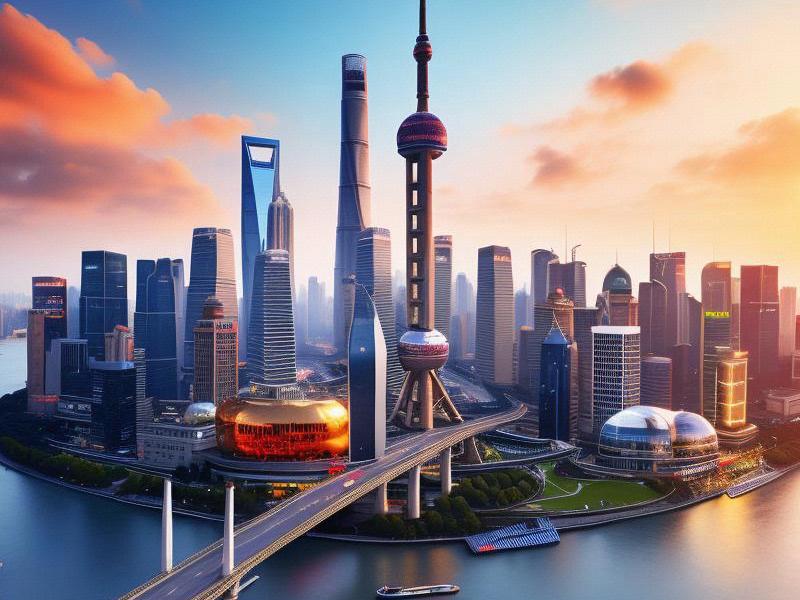This article delves into the ongoing cultural renaissance in Shanghai, exploring how the city is redefining its identity through a vibrant arts scene, urban transformations, and its growing global influence.

Shanghai, a city that has long been a beacon of China's economic prowess, is now making waves in the cultural arena. Once known primarily as a hub of commerce and industry, Shanghai is undergoing a remarkable transformation, one that is reshaping its identity and solidifying its position as a global cultural capital.
The city's cultural revival is evident in several key areas. The arts scene in Shanghai has flourished, with a proliferation of galleries, theaters, and music venues. This has not only attracted local artists but also international creatives who are drawn to the city's dynamic atmosphere. The opening of the Power Station of Art, a former power plant turned contemporary art museum, is a testament to this cultural shift. It has become a focal point for the city's art community, hosting exhibitions that showcase both Chinese and international artists.
The Bund, once a symbol of Shanghai's colonial past, has been revitalized into a cultural and entertainment district. The waterfront promenade now hosts a variety of events, from art installations to live performances, drawing visitors from all over the world. The area's transformation is a prime example of how Shanghai is blending its historical heritage with modern innovation.
Shanghai's culinary scene is also undergoing a renaissance. The city is known for its fusion of traditional Chinese flavors with international cuisines. The rise of boutique restaurants and food festivals has elevated the dining experience, offering locals and tourists alike a taste of the city's diverse culinary heritage. The annual Shanghai International Food Festival is a major event that celebrates this culinary diversity, attracting food enthusiasts from around the globe.
爱上海论坛 The city's universities and research institutions are playing a crucial role in this cultural revival. They are fostering a vibrant academic environment that encourages innovation and creativity. The establishment of the ShanghaiTech University, a collaboration between the Chinese Academy of Sciences and the Shanghai Municipal Government, is a significant step in this direction. It aims to become a world-class institution that drives technological and scientific advancements.
Shanghai's cultural revival is not without its challenges. The rapid pace of urbanization has led to concerns about the preservation of historical sites and the impact on local communities. However, the city government has taken proactive measures to address these issues. Initiatives such as the "1+17" protection plan for historical buildings aim to preserve the architectural heritage while promoting sustainable development.
The integration of technology into cultural initiatives is another aspect of Shanghai's cultural revival. The city is leveraging digital platforms to promote its cultural offerings and engage with a global audience. Virtual reality (VR) and augmented reality (AR) experiences are being used to bring art and history to life, making cultural heritage more accessible to the public.
Shanghai's cultural revival is also reflected in its growing influence on the global stage. The city has become a hub for international cultural exchanges, hosting events such as the Shanghai International Film Festival and the Shanghai World Expo. These events not only showcase Shanghai's cultural achievements but also provide a platform for dialogue and collaboration among nations.
爱上海同城对对碰交友论坛
The impact of Shanghai's cultural revival is being felt beyond the city limits. It is inspiring other cities in China and around the world to embrace their cultural heritage and invest in cultural initiatives. The success of Shanghai serves as a model for urban transformation, demonstrating that economic growth and cultural enrichment can go hand in hand.
The city's cultural revival is also influencing the way people perceive Shanghai. Once associated primarily with its skyline and economic achievements, Shanghai is now being recognized for its rich cultural tapestry. This shift in perception is helping to attract a diverse range of talent, from artists and designers to entrepreneurs and innovators.
The role of the private sector in Shanghai's cultural revival cannot be overstated. Businesses are investing in cultural projects and supporting local artists and organizations. The Shanghai Culture and Creative Industry Investment and Financing Platform is an example of how the private sector can contribute to the city's cultural development. It provides funding and resources for cultural initiatives, fostering a supportive environment for creativity and innovation.
上海龙凤419会所 The city's cultural revival is also having a positive impact on the local economy. The growth of the arts and creative industries is creating new job opportunities and contributing to the city's economic vitality. The Shanghai Creative Industries Association estimates that the creative industries generate billions of dollars in revenue annually, making them a significant contributor to the city's economy.
Shanghai's cultural revival is a multifaceted phenomenon that encompasses art, architecture, cuisine, education, and technology. It is a testament to the city's ability to adapt and innovate in the face of rapid urbanization and globalization. The cultural renaissance is not just about preserving the past but also about shaping the future.
The city's cultural revival is also fostering a sense of community and pride among its residents. Cultural events and initiatives provide opportunities for people to come together and celebrate their shared heritage. This sense of community is essential for the long-term sustainability of Shanghai's cultural development.
In conclusion, Shanghai's cultural revival is a dynamic and multifaceted process that is reshaping the city's identity and solidifying its position as a global cultural capital. The arts scene, urban transformations, culinary innovations, academic advancements, and technological integrations are all contributing to this cultural renaissance. While challenges remain, the city's proactive measures and the support of the private sector are ensuring that Shanghai continues to thrive as a hub of culture and creativity.
The impact of Shanghai's cultural revival extends beyond the city, inspiring other urban centers to embrace their cultural heritage and invest in cultural initiatives. As Shanghai continues on this journey, it is clear that the city's cultural renaissance is not just a reflection of its past but also a blueprint for its future.